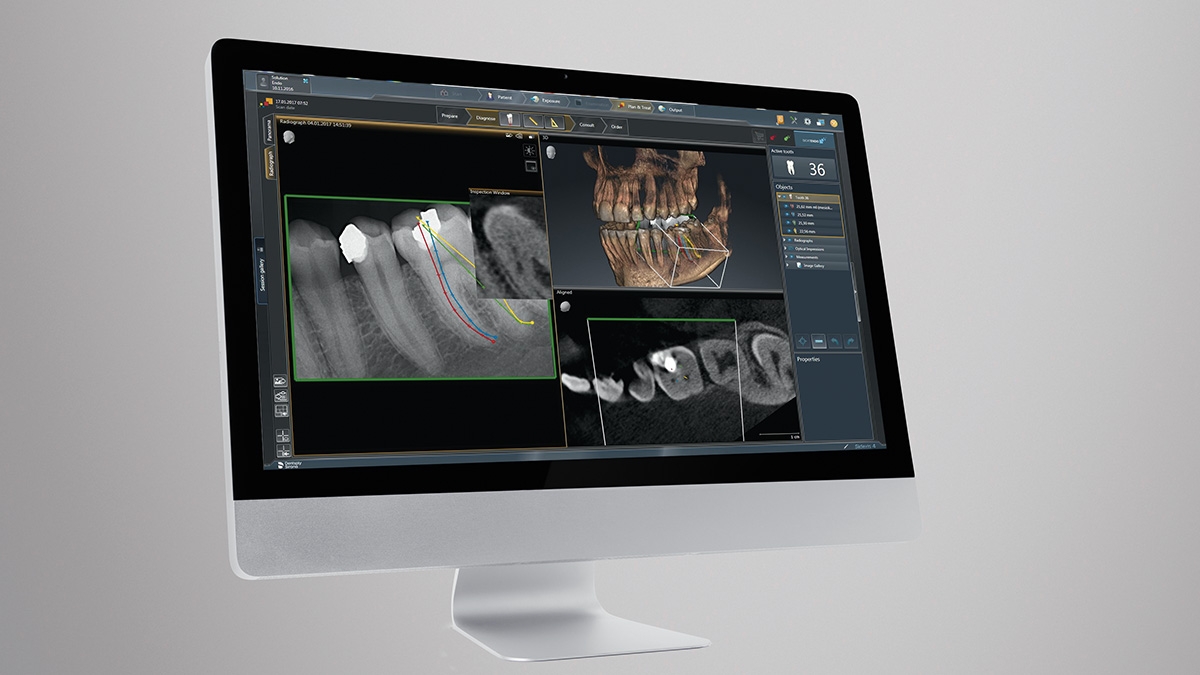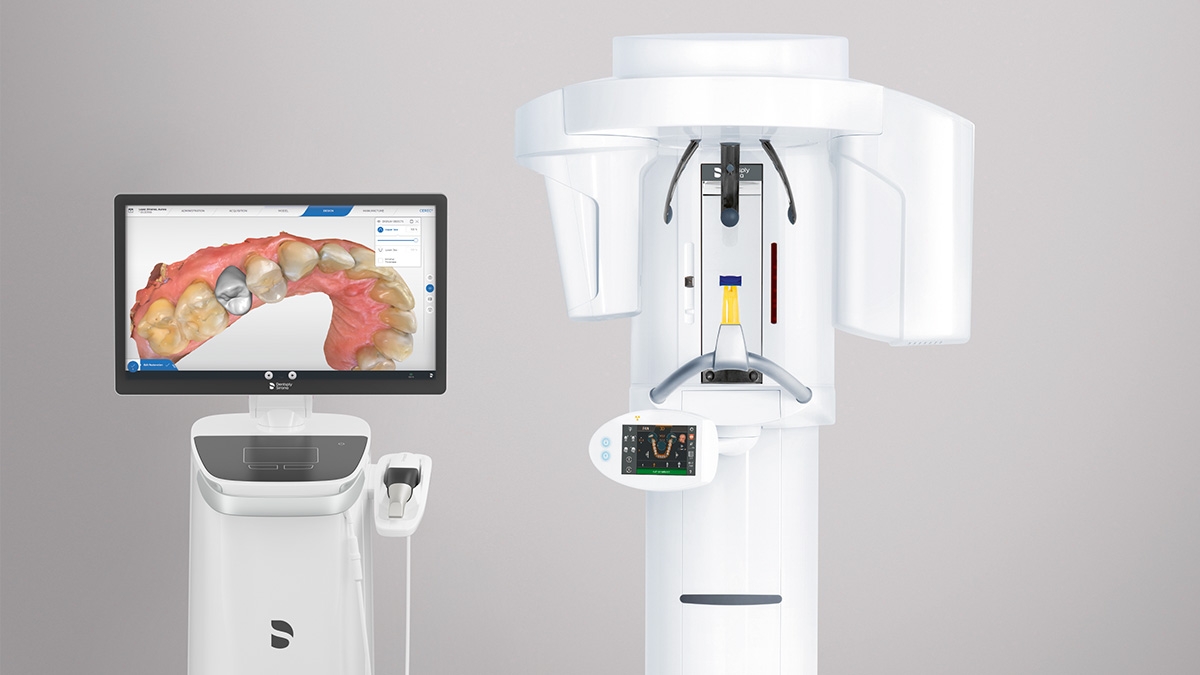
Dr James Taylor discusses the pivotal role of CBCT in aligner and implant workflows.
At our Leeds practice my focus is primarily on implants, orthodontics, restorative, cosmetic and aesthetic dentistry. We have been using digital technology in the practice for many years, integrating CBCT (Cone-beam computed tomography) X-rays with intraoral scanning and digital treatment planning.
This enables us to benefit from enhanced clinical diagnosis, meaning we can grow case conversions and significantly improve patient outcomes.
Every treatment begins with a reliable diagnosis. The process should be precise, quick and the image should be easy to capture. Specifically, we’re talking about radiography, which is key for the diagnosis, planning and execution of treatment, whether that’s a simple filling or something more complex, such as root canal therapy, implant planning or aligner treatment.
‘Comfortable and confident’
A high-quality X-ray with maximum clinical information allows me to feel comfortable and confident. But it also gives the patient confidence as well. It gives a clear view of the case and I have everything I need to complete successful treatment. The patient can also be involved in the planning process and see exactly what we’re trying to achieve and the treatment involved.
To capture images we use the Orthophos SL 2D/3D CBCT machine from Dentsply Sirona. The key to equipment like this is not just the pictures they take but how they are taken, including the dose of radiation the patient is exposed to.
The Orthophos SL is unusual compared to a standard or high definition CBCT in that the effective dose exposes the patient to fewer millisieverts (mSv). In fact, we are using the same effective dose as we would do for a 2D X-ray, which means we can incorporate 3D X-rays into planning for aligner treatment without having to expose patients to a high dose of radiation.

Treatment planning
For aligner treatment we can mesh the dental scan with the CBCT in layers. I can see where the roots are within the bone and how much root coverage the bone has given. This results in a root bone level image, which I can then use to plan more predictable outcomes. This is crucial to the safety of the treatment and to the ongoing health of the patient’s dentition and supporting structures.
In my opinion CBCT is critical when doing comprehensive multi-disciplinary treatment planning for orthodontics, restorative cases and implants. I want to plan using all the tools available. So I start by using Primescan and then a low dose CBCT. I mesh the images together and then move forward to the planning stage.
Visibility of the roots helps me anticipate tooth movement so I can plan and treat in a confident and predictable way. This means I’m winning on several levels. I’m winning on the aesthetics and I’m winning on the treatment plan in that I can control tooth movements very closely.
I know where the roots are and where they’re moving and therefore my mechanics can be better as well. I can do simpler movements and I can see where I can avoid issues with roots clashing. Also I can see where the expansion is, where the bone is and I know I’m doing no harm. But even more than that, I know I’m achieving my goals in a controlled way. For me, this is essential.
Implant planning
For implant treatment everything needs to be calculated and planned to mitigate any risk. In our practice we can carry out navigated implant placement using CBCT. We use Astra Tech Implant System EV implants and SICAT software for planning implant placement. We also use it to plan the restorative outcomes to create treatment that is as simple and precise.
With Astra Tech Implant System navigation we get a surgical guide report. We have visibility from every angle, so we know exactly where the implant is going and what size of implant is needed.
Using the CBCT data, we can plan the drilling protocols and the accuracy of the stent. This ensures the implant is placed in exactly the right position where it can be functionally and aesthetically restored.
Predictable outcomes
My advice to any clinician is to use all the digital diagnostic tools at your disposal. If you’ve got a CBCT, then use it; it enhances your treatment planning and I wouldn’t do any aligner cases without it.
CBCT has changed how I work, how I think and how I communicate with my patients. Patients can see the care and attention we’re giving to their treatment. They can see what we’re trying to achieve, and they appreciate it. This helps them move forward with complete confidence.
Detailed treatment planning and diagnosis is key to successful outcomes. I’m not only diagnosing issues using the CBCT mesh with a scan, I’m using it to plan my treatment so when I get a proposal back from Suresmile I know I can actively move those teeth within the bone. I know where those roots are going and I can change and adapt the plan knowing what the final outcome is likely to be.
Confidence and predictability are the messages here. This results in improved outcomes in terms of control of safety for the patient, in the health of the final outcome and in the aesthetics. It really is a game changer for our practice and our patients.
To find out more about Dentsply Sirona’ extensive range of imaging solutions, please visit Extraoral Imaging | Dentsply Sirona



